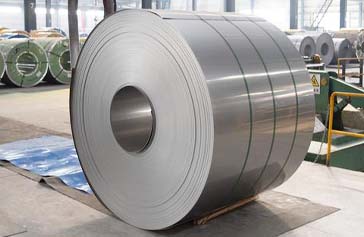
Name: Industry News
Ⅰ. Global Capacity Pattern: Asia Dominance and Emerging Market Rise
In the second half of 2025, global crude steel production is expected to remain in the range of 1.85-1.9 billion tons, and Asia (especially China and India) will continue to contribute 62.8% of global production capacity. Although China's production capacity continues to be optimized (the output is expected to be 495 million tons in the second half of the year, a year-on-year decrease of 2.3%), it has achieved green transformation by increasing the proportion of short-process electric arc furnaces to 20%; India has become the largest growth pole with a growth rate of 6.1%, and 58.8% of its annual production capacity of 149 million tons adopts electric furnace technology. Capacity expansion in Southeast Asia (Vietnam and Indonesia) has accelerated, and the new electric arc furnace capacity in the second half of the year is expected to reach 8 million tons.
Ⅱ. Regional differentiation characteristics and driving factors
European and American production cuts and high-end transformation
The EU's crude steel production may drop to 52 million tons in the second half of the year (a year-on-year decrease of 3.1%), but the import dependence of high-end automotive plates will rise to 42%; the United States maintains a production capacity of 79.5 million tons through a 71.8% electric furnace ratio, and the localization rate of steel for new energy equipment has increased to 65%.
Emerging market infrastructure drive
Africa (+5.5%) and the Middle East (+5.3%) saw a counter-trend increase in crude steel production. Projects such as the expansion of Egypt's Dekheila Steel Plant will drive the region's annual production capacity to exceed 40 million tons.
Ⅲ. Low-carbon technology reshapes the industrial map
In the 29.1% of the global electric furnace steel, the following will be added in the second half of the year:
China Baowu's 1.2 million tons of hydrogen metallurgy project is in commercial operation (30% carbon reduction)
India's Tata Group launches a 5 million ton direct reduction iron base
The second phase of the EU carbon border tax (CBAM) is implemented, pushing up the cost of traditional blast furnace processes by 15-20%
Ⅳ. Trade flows and policy risks
Export pattern adjustment
China's steel exports are suppressed by EU anti-dumping (such as a 62.3% tax rate on tinplate), and exports in the second half of the year may drop to 55 million tons; India and Vietnam seize EU market share through re-export trade.
Trade barriers escalate
In addition to the EU carbon tariff, the United States may impose a 10% "climate surcharge" on imported steel, affecting 20 million tons of global trade.
V. Strategic trends of key enterprises
Enterprise regional layout Key technology investment directions China Baowu Southeast Asia joint venture steel plant (Malaysia) Hydrogen metallurgy, automotive plate third-generation steel ArcelorMittal Brazil green plate base Carbon capture (CCUS) system integration Tata Steel India Orissa expansion project Direct reduction iron-electric furnace short process